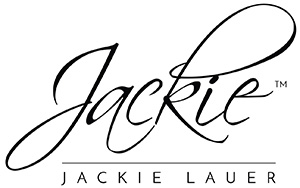
Check Yourself: Taking a Closer Look at Intention versus Impact in Communication to Build Trust in Relationships
Ever been in a conversation only later to realize the impact you had was NOT what you intended? Most of us have. Imagine how many times you were clueless as to the impact you had because you couldn’t see or hear it.
Whether you are communicating with your team, executive leaders, friends, family or even people you are meeting for the first time, there is a lot of power that your intention and impact hold over that interaction. In order to build strong relationships, it’s important to take inventory over the intent you have with your message and the impact you want to have, versus the actual impact you are having with the person on the other side of the conversation. So often we assume that others understand our behaviour, actions and words because we distinctly know the why and motivations behind them, but that isn’t always clear to the other party, which can cause a communication breakdown. How do you prevent this and become more mindful? A great practice is to gently “check yourself”, which is to say, clarify your intentions and welcome feedback to truly understand the impact you are having. When you gain a better understanding of how you communicate, you can help others with theirs as well.
PART 1: UNDERSTANDING INTENTION
We often hear, “what are your intentions with xyz?” referenced in pop culture and in conversation.This is an underlying question that most people have when meeting or interacting with others. Although you and the person you are interacting with may both have positive intentions with each other, there are a number of assumptions that can happen that can create misunderstandings and a communication breakdown.
How Do you Clarify Intention?
The reason a breakdown occurs, is due to the fact that everyone is trying to decipher a person’s motivations stacked up against their behavior. This simple, yet profound processing that we all have relates to “Relationship Awareness Theory”.
Relationship Awareness theory is a motivational typology that has proven to be very accurate in determining the motivations behind behaviour. The theory itself is founded on four simple, yet profound, premises:
- Behaviour is driven by motivation to achieve or maintain self-worth
- Motivation changes in conflict
- Strengths, when overdone or misapplied, can be perceived as weaknesses and
- Personal filters influence perceptions of self and of others.
The overall principle to keep in mind here is looking at behaviour versus a person’s intent, and the intent we “assign” to people or situations based on the behaviour we are seeing, but through our own specific lense. So some helpful things to do when you notice yourself having assumptions about others or yourself are to do the following:
- Note behaviour
- Then notice assumption (about intention behind behaviour)
- DO NOT be attached to being right about those assumptions, and instead seek clarification. How?
- Question it, ask for clarification, but it’s a healthy practice to always assume good intentions (even though we might be prone to assuming the worst- challenge yourself).
- Come from curiosity, not judgement
- Separate facts versus interpretation
This approach may seem simple and like common sense, but it is something a lot of people take for granted in day to day interactions. By staying mindful and curious, and by keeping an open mind and challenging your assumptions- you can clarify other’s intentions and check yourself by questioning some assumptions you may have about behaviour and motivation. This in itself can improve communication and relationships in business and life.
PART 2: IMPACT
A natural secondary piece of intention, is the impact that you have on others. Every human has an understanding of how they would like to impact another, but when you walk away from an interaction- the way you think it went, and the way it actually went may be two different things. As with the intention we tend to assume others have and vice versa, the same is true of a person’s impact.
For example, if you are the leader of a company, and you host staff meetings to address productivity- but no one is participating, even when you ask members to share their opinions and they don’t, a communication breakdown has happened. This is a difficult situation because your intention may be to address employee morale to then increase productivity, but your staff may feel misunderstood or isn’t responsive to the method you are taking to communicate.
In this instance, instead of assuming your staff are unmotivated, negative nancy’s – a great approach would be to own your impact in this situation, and be vulnerable and courageous courage enough to invite feedback about your impact and how to improve the situation.
If you are in any social situation where you notice something feels off and you want to redirect that exchange and ensure your intention and impact are being delivered and felt positively, invite that feedback BUT ensure you are ready to hear it and not react out of defensiveness. The only way to improve communication in relationships is to be open to feedback and hear it and make a plan to act on it and make a change to better strengthen those relationships.
Gaining a better understanding of intention and impact as it pertains to communication in relationships is an important and first step to improving them in all areas of your life.
When you align intent with it’s impact, that builds trust for great relationships.



